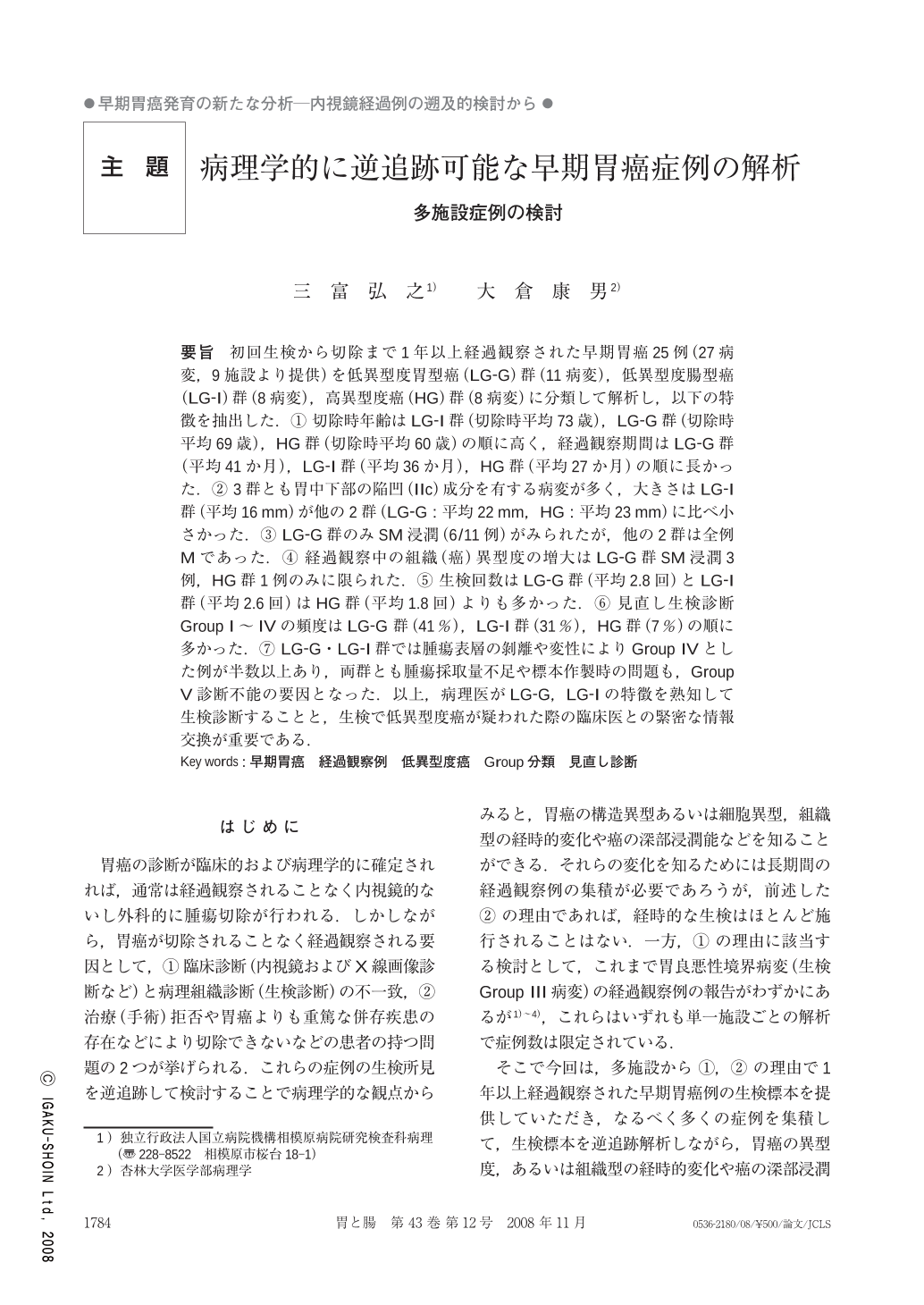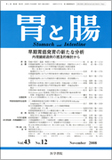Japanese
English
- 有料閲覧
- Abstract 文献概要
- 1ページ目 Look Inside
- 参考文献 Reference
- サイト内被引用 Cited by
要旨 初回生検から切除まで1年以上経過観察された早期胃癌25例(27病変,9施設より提供)を低異型度胃型癌(LG-G)群(11病変),低異型度腸型癌(LG-I)群(8病変),高異型度癌(HG)群(8病変)に分類して解析し,以下の特徴を抽出した.(1)切除時年齢はLG-I群(切除時平均73歳),LG-G群(切除時平均69歳),HG群(切除時平均60歳)の順に高く,経過観察期間はLG-G群(平均41か月),LG-I群(平均36か月),HG群(平均27か月)の順に長かった.(2)3群とも胃中下部の陥凹(IIc)成分を有する病変が多く,大きさはLG-I群(平均16mm)が他の2群(LG-G:平均22mm,HG:平均23mm)に比べ小さかった.(3)LG-G群のみSM浸潤(6/11例)がみられたが,他の2群は全例Mであった.(4)経過観察中の組織(癌)異型度の増大はLG-G群SM浸潤3例,HG群1例のみに限られた.(5)生検回数はLG-G群(平均2.8回)とLG-I群(平均2.6回)はHG群(平均1.8回)よりも多かった.(6)見直し生検診断Group I~IVの頻度はLG-G 群(41%),LG-I群(31%),HG群(7%)の順に多かった.(7)LG-G・LG-I群では腫瘍表層のはく離や変性によりGroup IVとした例が半数以上あり,両群とも腫瘍採取量不足や標本作製時の問題も,Group V診断不能の要因となった.以上,病理医がLG-G,LG-Iの特徴を熟知して生検診断することと,生検で低異型度癌が疑われた際の臨床医との緊密な情報交換が重要である.
We analyzed 27 lesions of early gastric cancer(EGC)lesions from 25 patients who were followed up more for than 1 year before tumor resection. The lesions studied consisted of 8 lesions with low-grade intestinal phenotype cancer(LI-EGC), 11 with low-grade gastric phenotype cancer(LG-EGC)and 8 with high-grade ordinary type cancer(HG-EGC). The mean ages at tumor resection/mean follow-up periods were 73 years/36 months in LI-EGC, 69 years/41 months in LG-EGC and 60 years/27 months in HG-EGC. The mean sizes of the tumors were 16 mm in LI-EGC, 22 mm in LG-EGC and 23 mm in HG-EGC. Although 6 of 11 LG-EGCs contained areas of submucosal invasion, none of the LI-EGC or HG-EGC had invaded the submucosa. Three LG-EGCs with submucosal invasion and one HG-EGC demonstrated enhanced cellular atypia in follow-up periods. Mean frequencies of biopsy were 2.6 times in LI-EGC, 2.8 times in LG-EGC and 1.8 times in HG-EGC. Retrospectively, 31% of biopsy materials in LI-EGC, 41% in LG-EGC and 7% in HG-EGC were impossible to diagnose as definitive evidence of carcinoma, because of desquamation or degeneration of tumor surface, small amount of tumor in biopsy material and inadequate sectioned specimens. In such situation, diagnostic difficulties occur in biopsy from EGC. It would be recommended to know the clinocopathological characteristics for EGC cases described above to provide information for mutual discuccion between clinicians and pathologists.

Copyright © 2008, Igaku-Shoin Ltd. All rights reserved.


